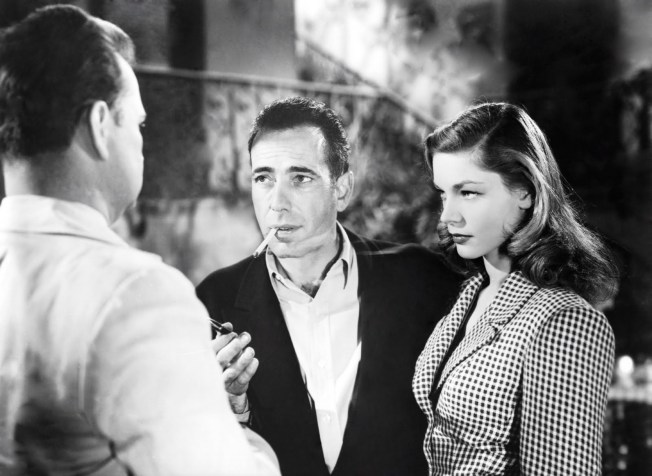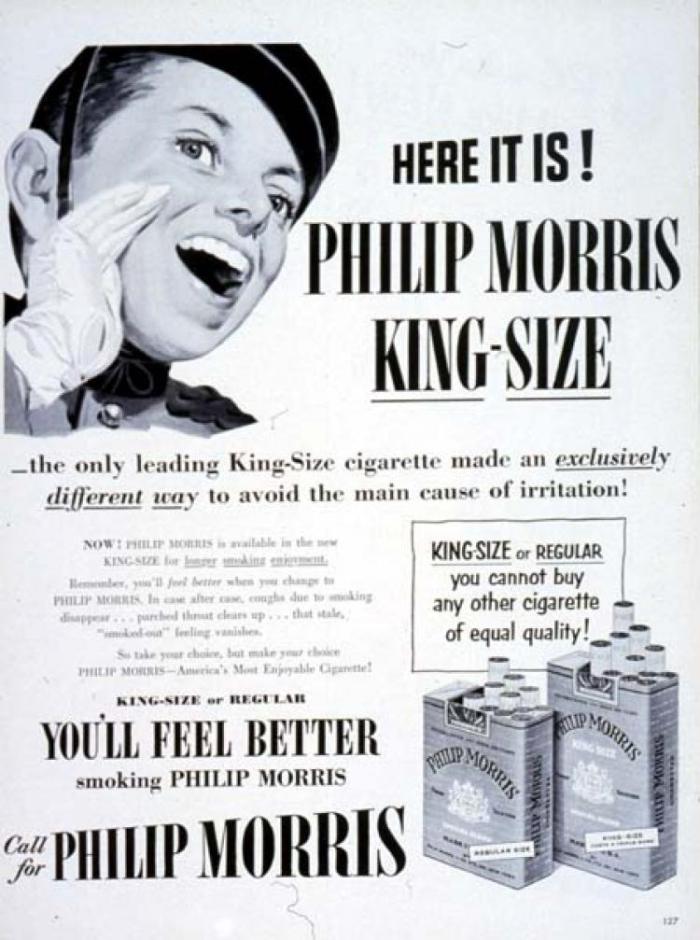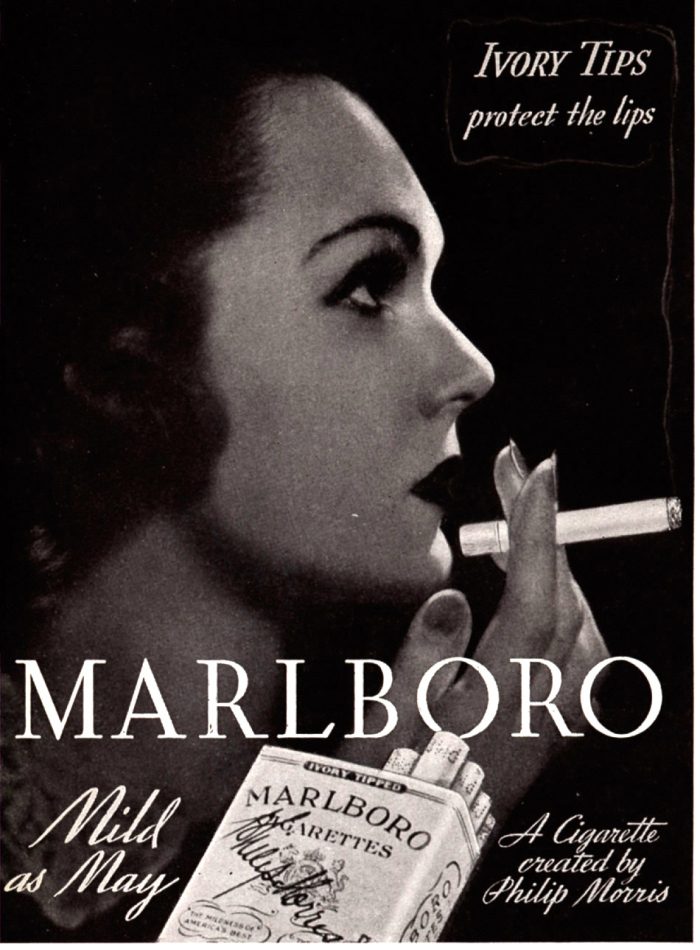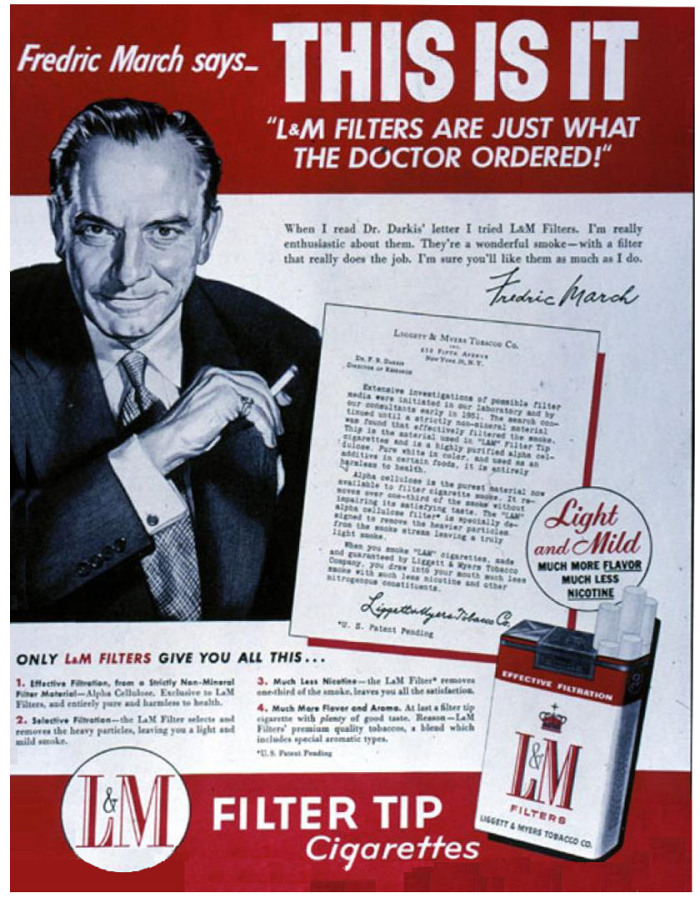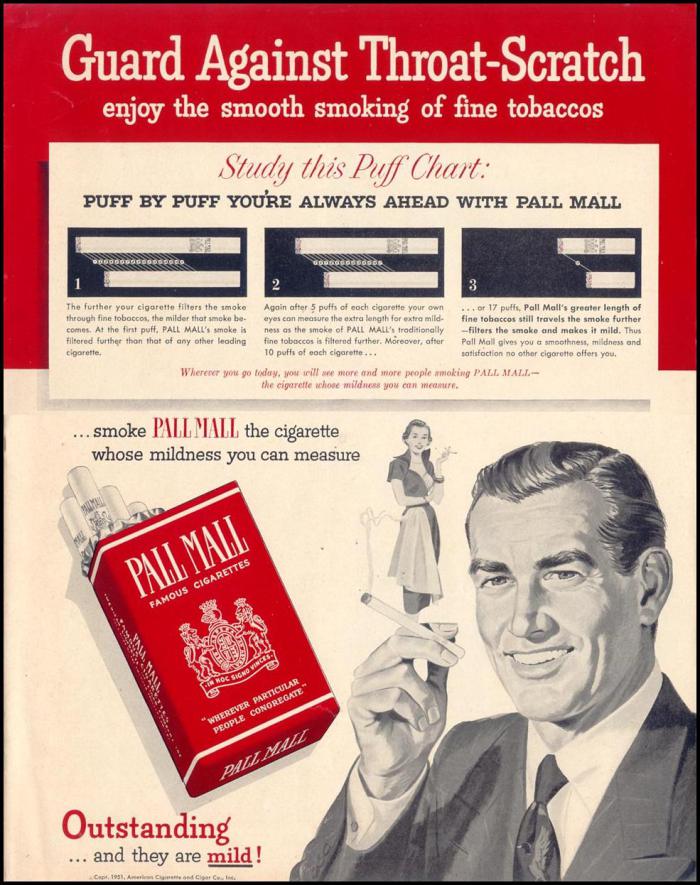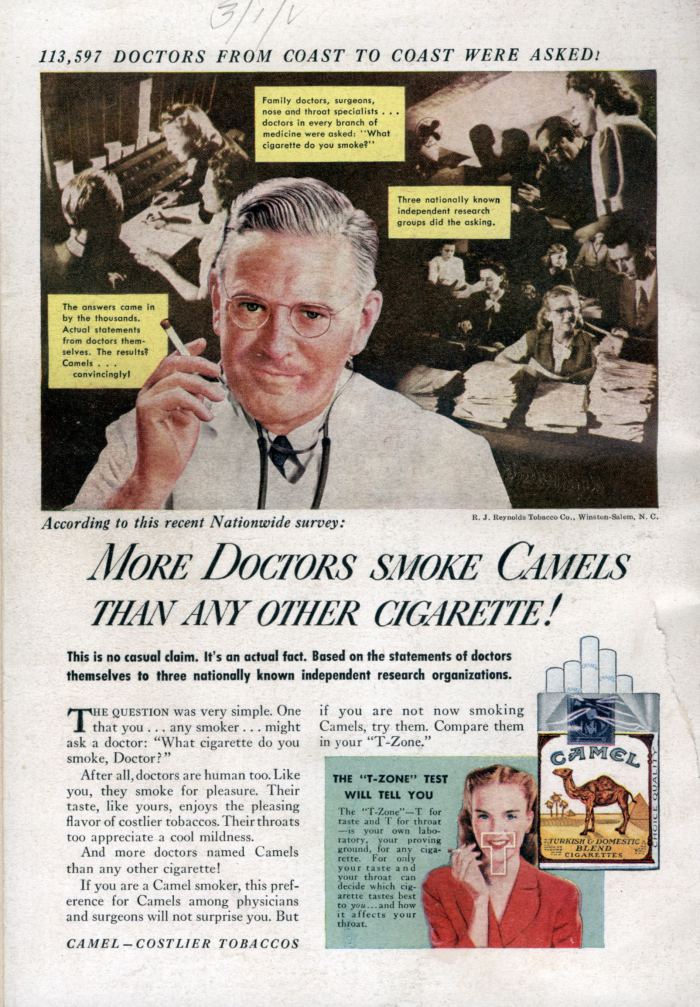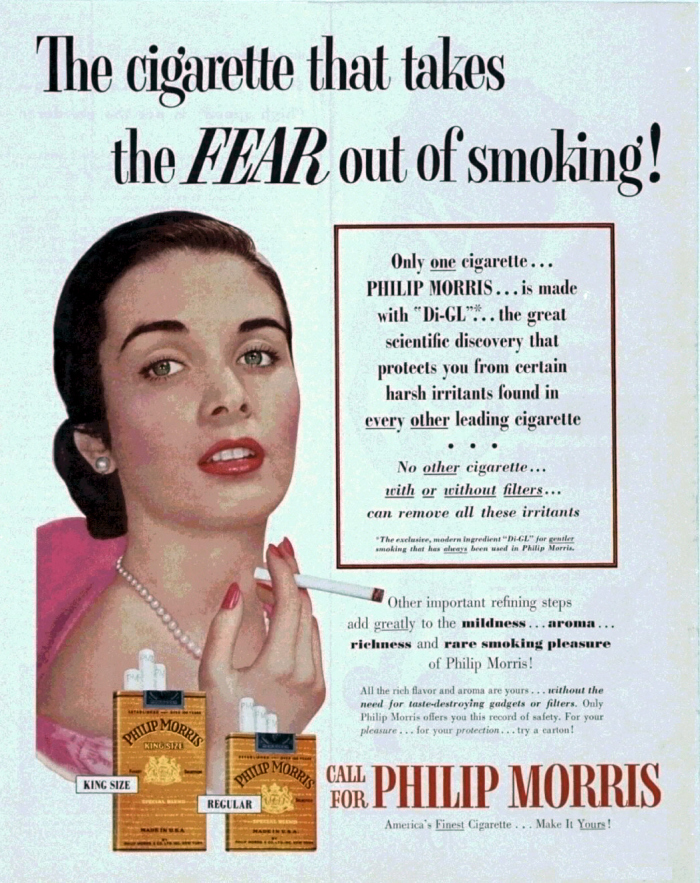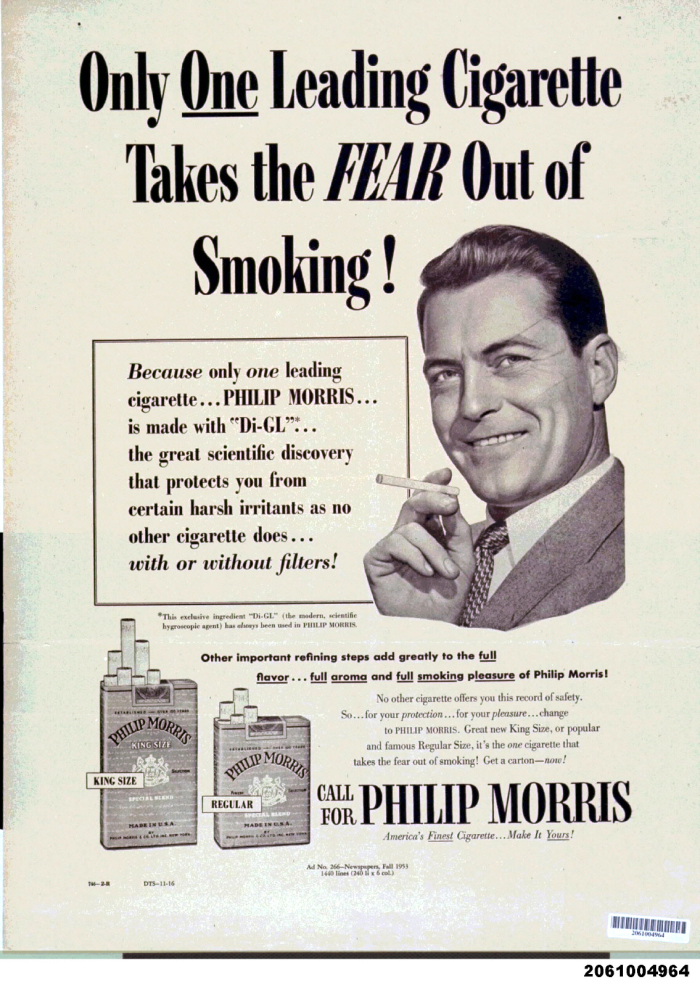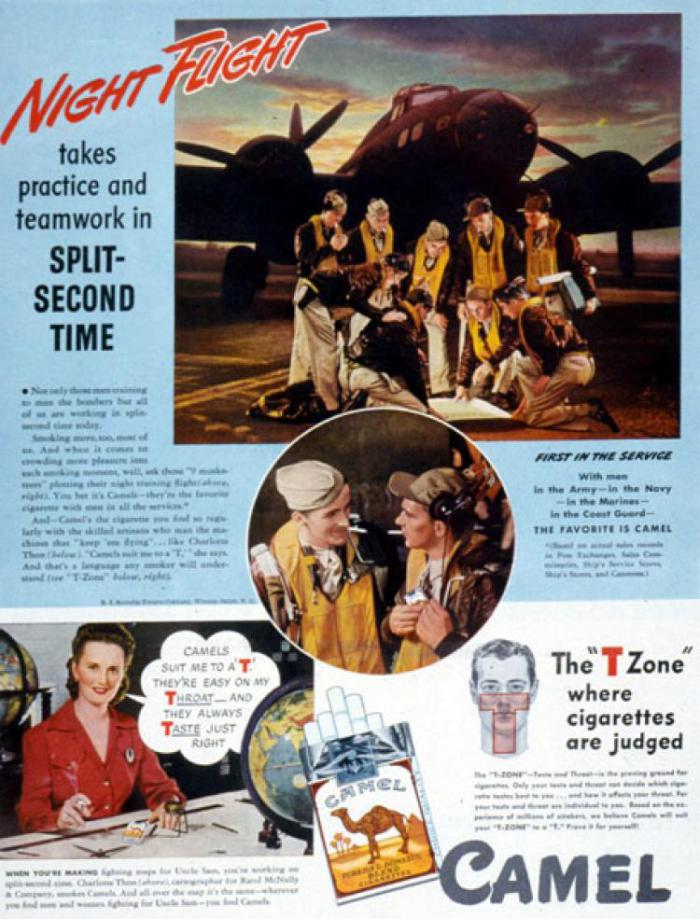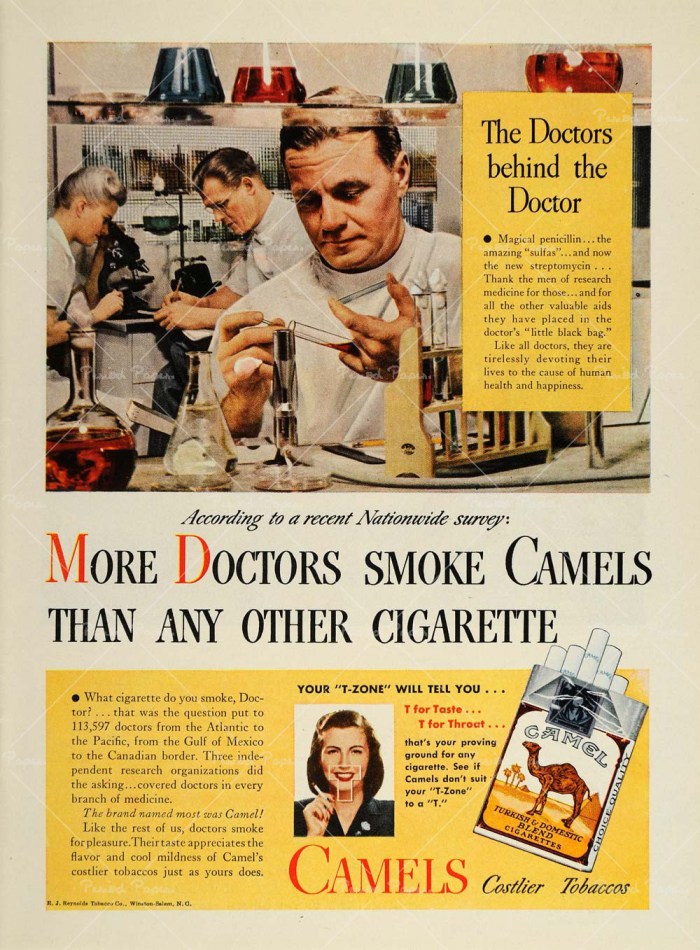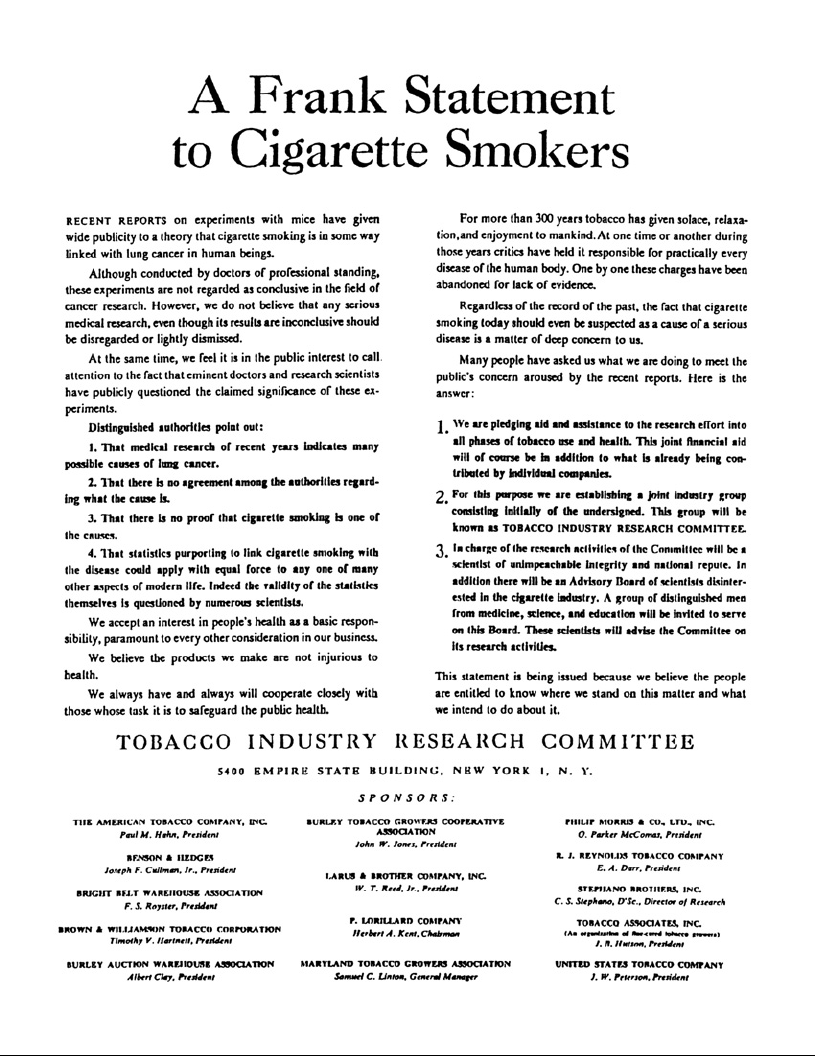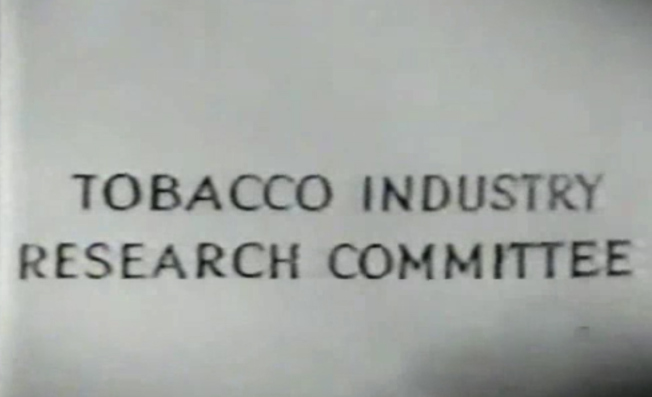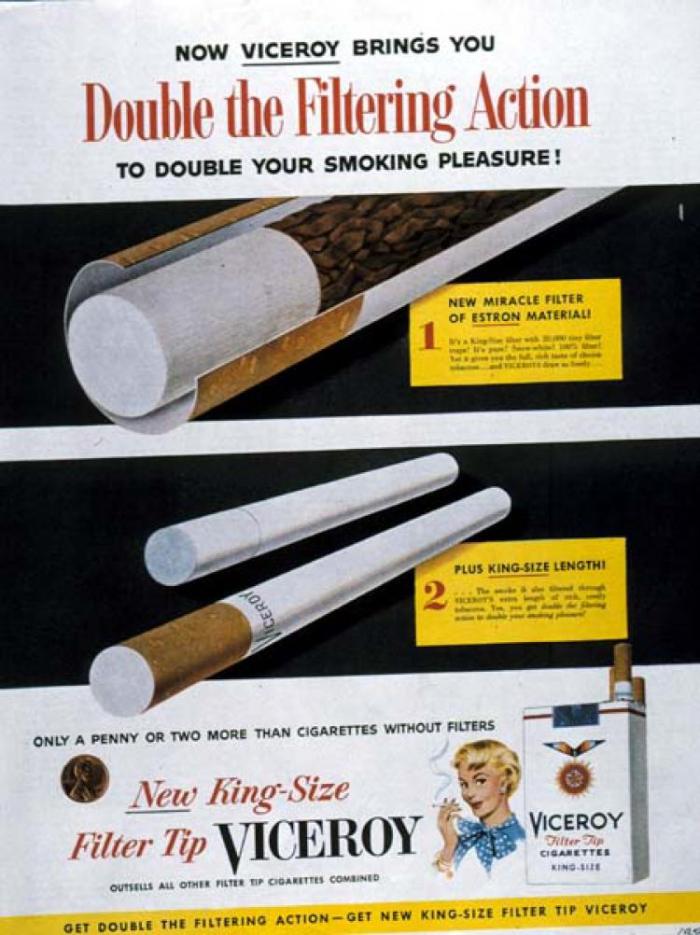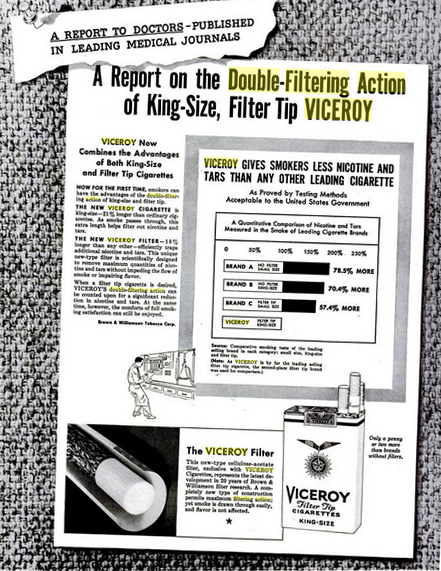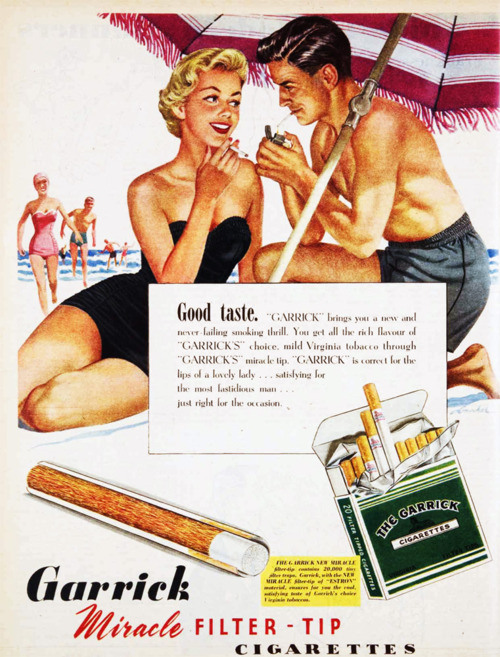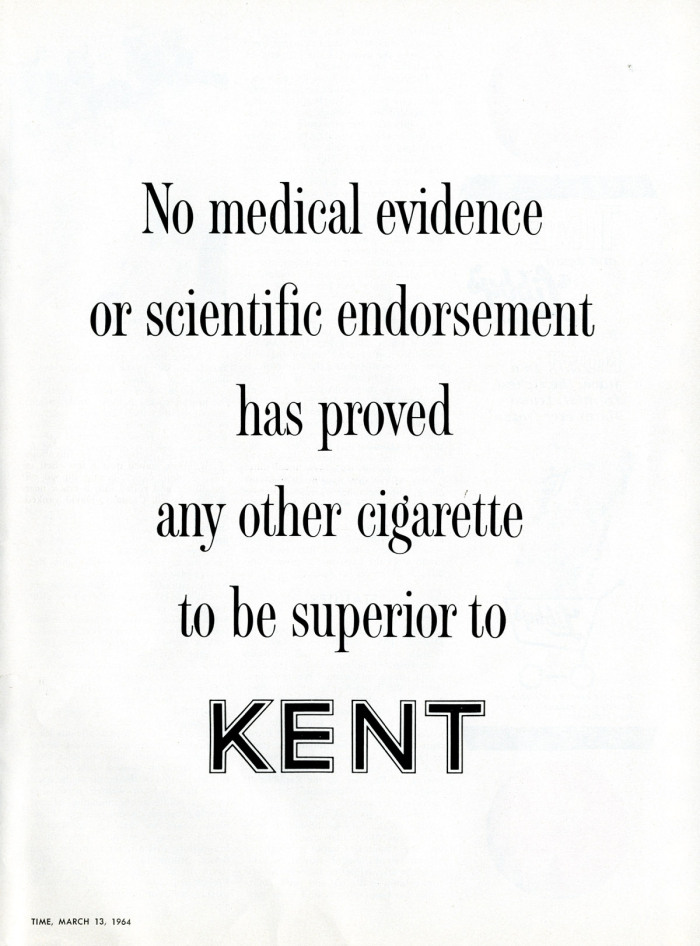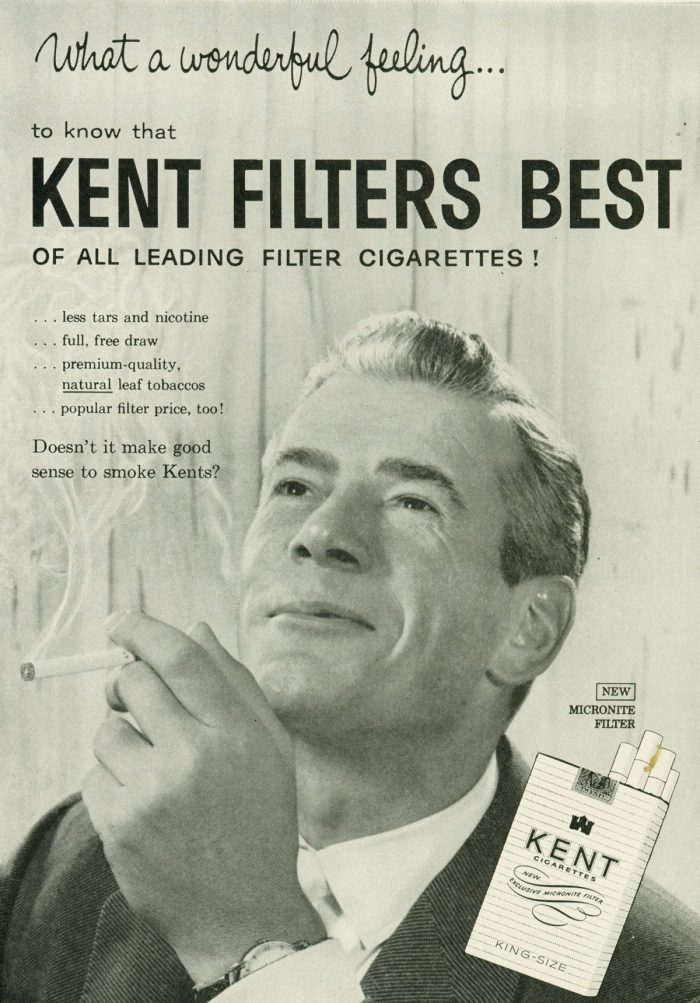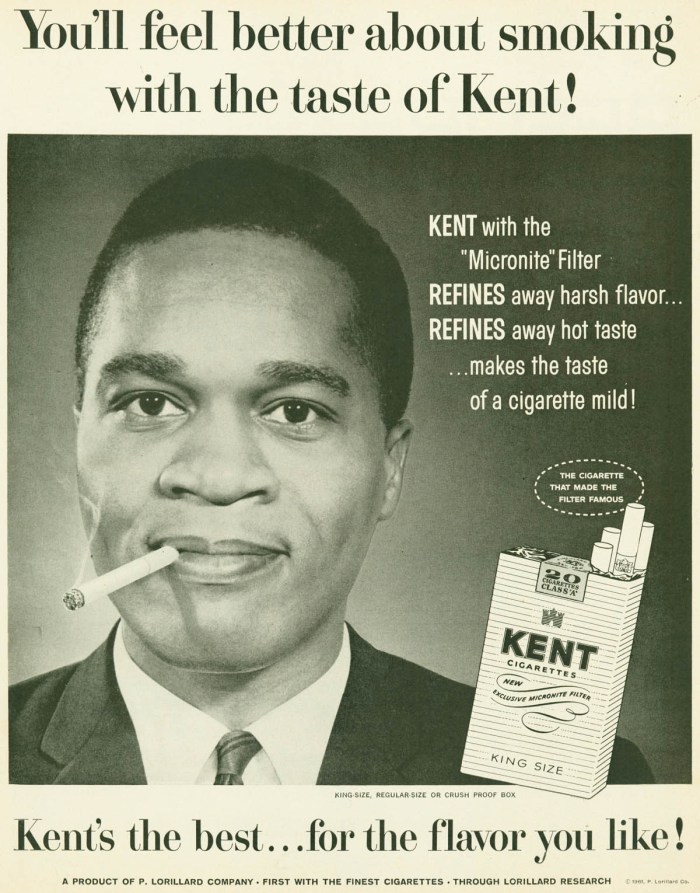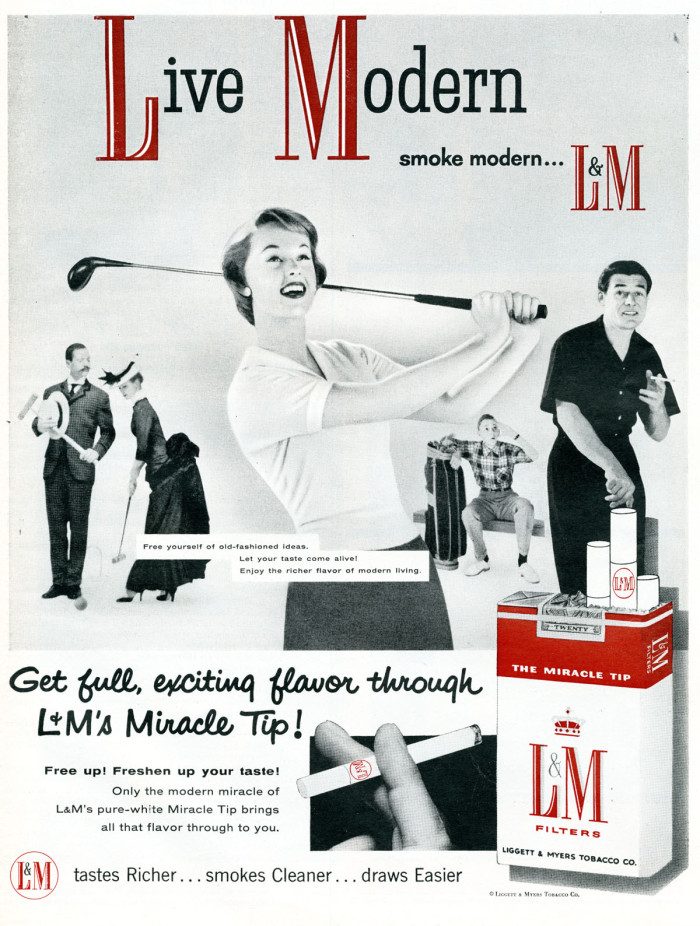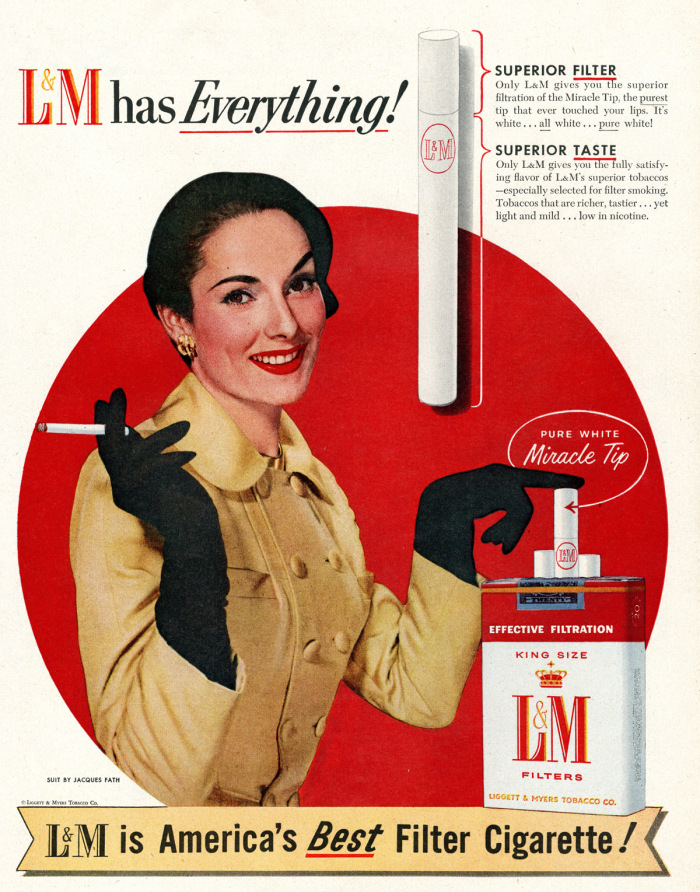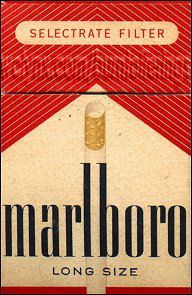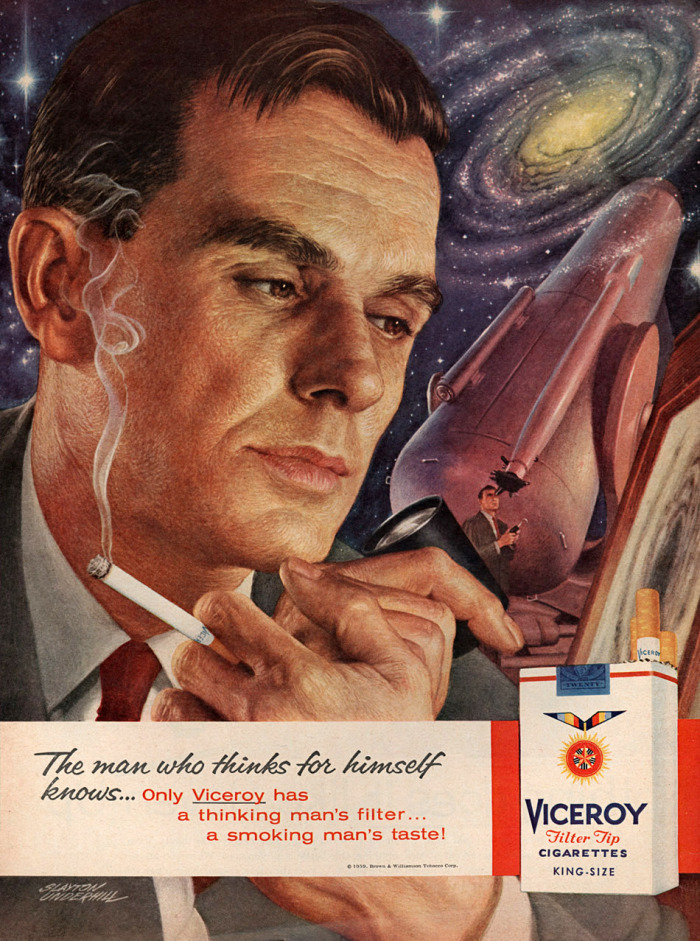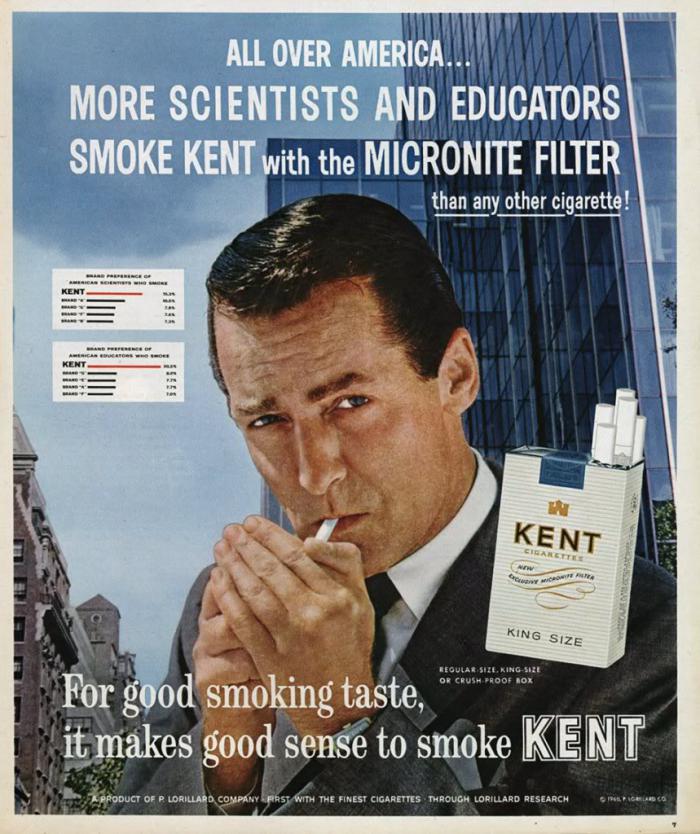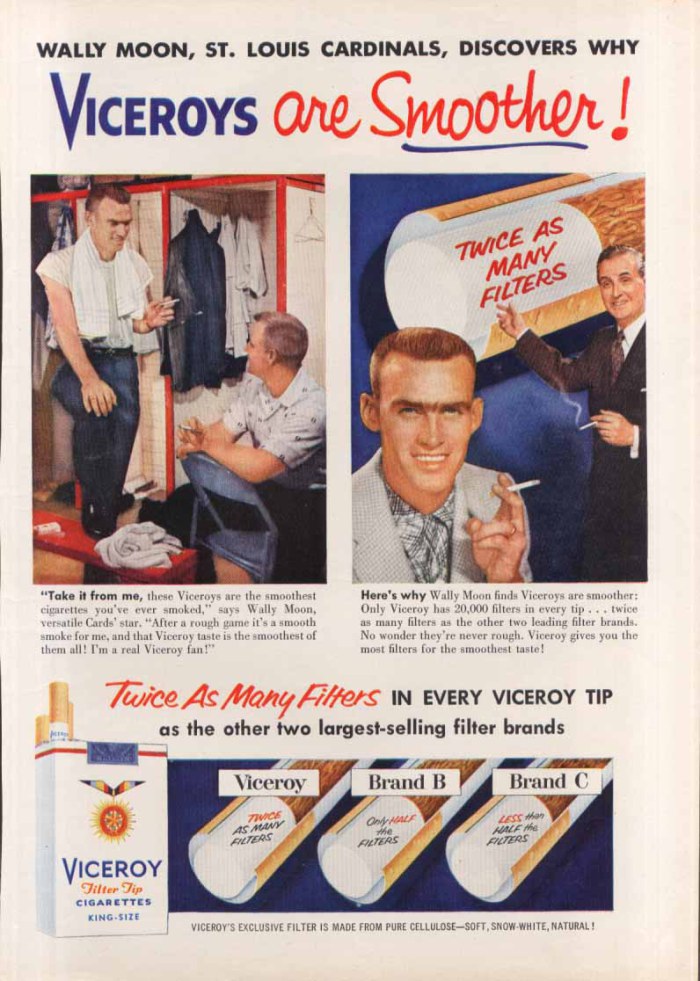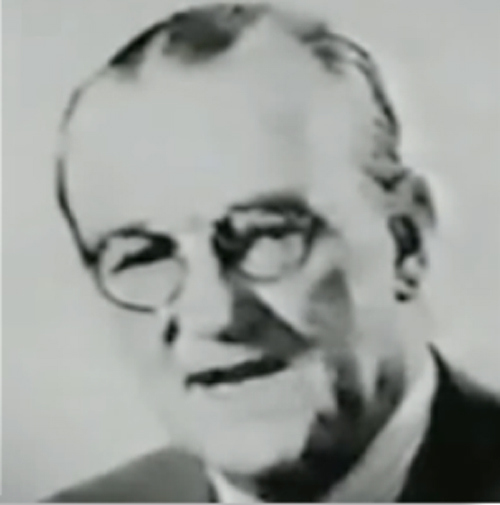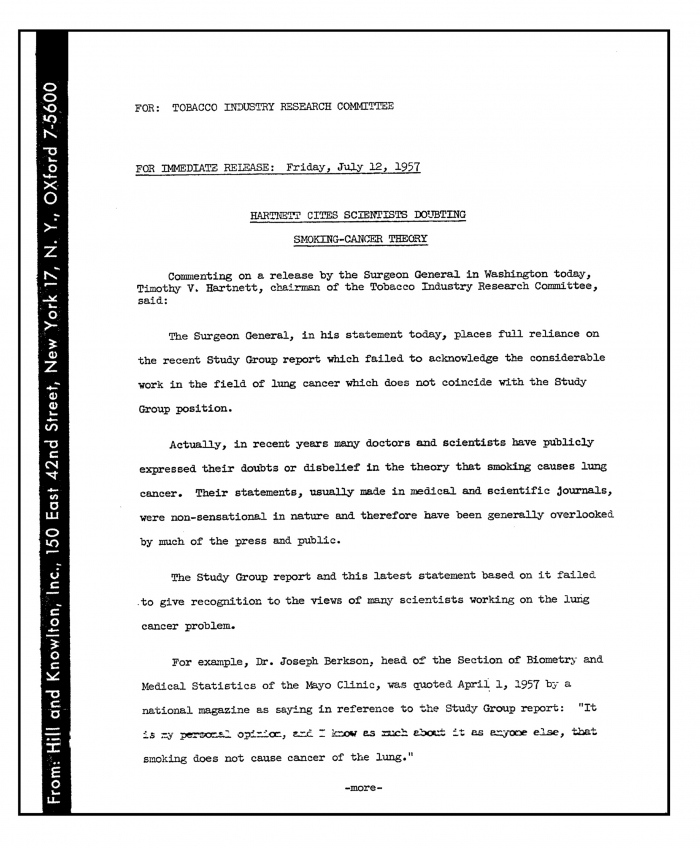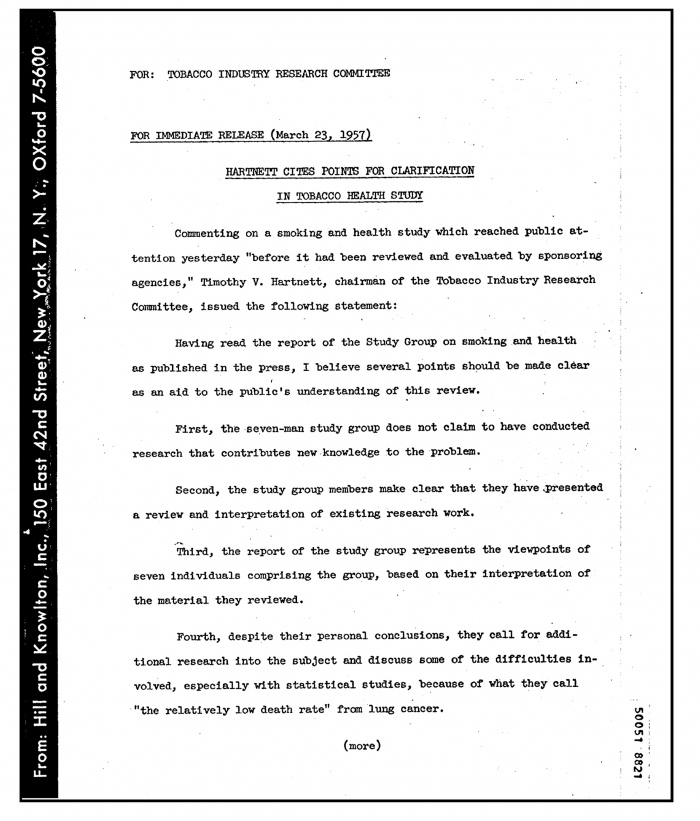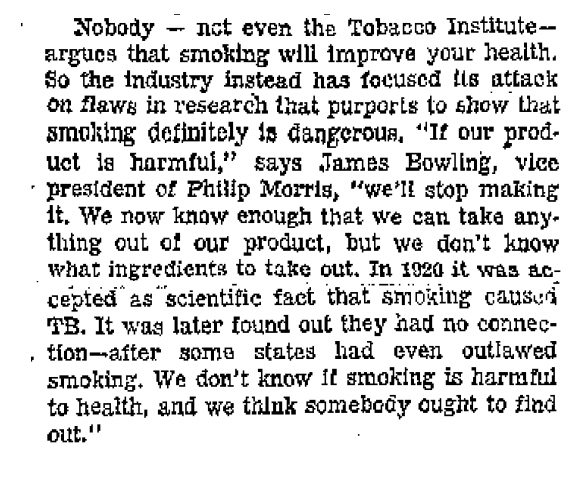1941: World War II
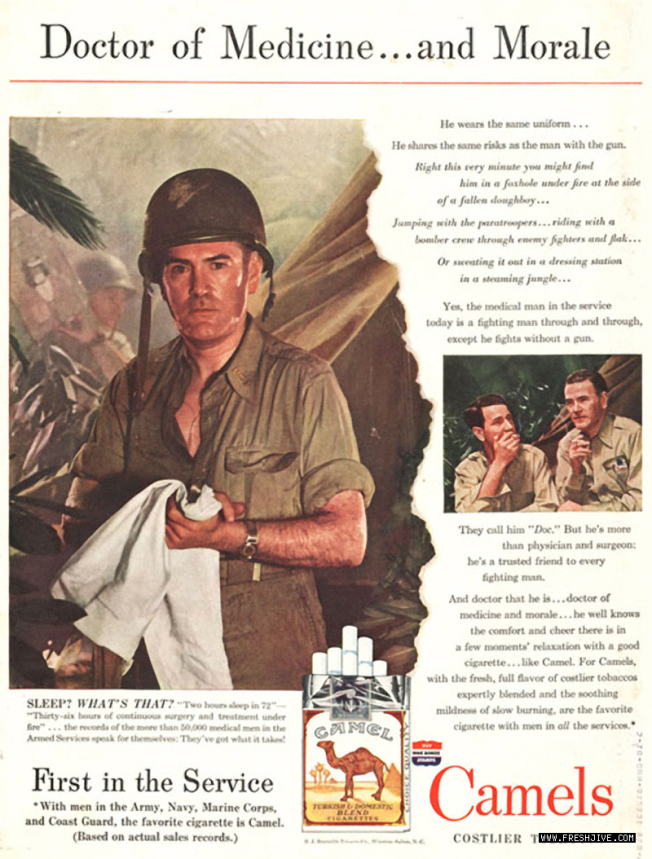 |
The cigarette habit exploded again during WW II with the inclusion of cigarettes in GI rations, the distribution of free cigarettes to VA hospitals and patriotic marketing themes. |
1942: Billboards
The Camel Man Billboard displayed in Time Square, captivated many visitors, while sending perfect smoke rings in to the New York sky. |
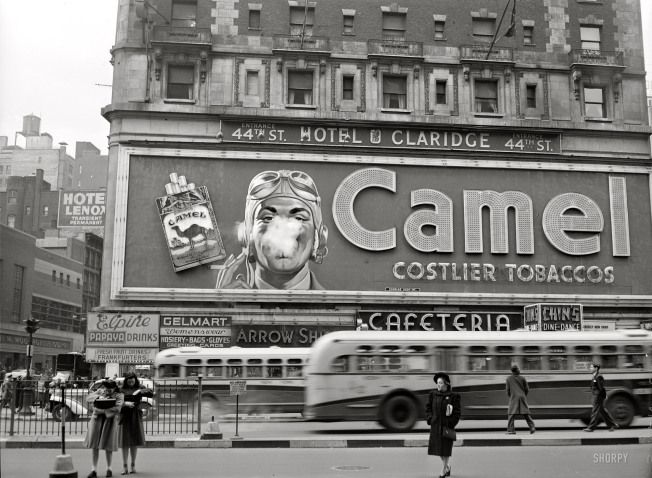 |
Movie Marketing
1950: Accelerated Marketing with Health Claims
Cigarette companies used health themes in many of their advertisements.
1954: Tobacco Industry Denies Health Risks
Tobacco Industry Research Committee (TIRC)
1955: Filter and Tar Wars
The sale of filter tip cigarettes skyrocketed in the 1950s. By naming their filters with pseudo technological and comforting phrases such as: Selectrate, Micronite, Dual Filter and Miracle Tip, the companies were selling more than cigarettes, they were selling the assurance of safety.
Filtering tar and nicotine from the smoke became an industry fetish. In spite of the fact there was no standard protocol for measuring cigarette yield until the 1967 F.T.C. Report each company touted its filter brands as the best.
1957: Tobacco Industry Rebukes Medical Publications
Every time the medical sciences published any new finding on the link between cigarettes and disease,the Tobacco Industry responded with all the public relations vigor it could muster.
-
Hartnett says statistics do not establish causes. June 4, 1957
“The T.I.R.C. still shares the widely-held position that the basic origins of cancer and heart disease will eventually be learned by careful laboratory and clinical study, not through statistical reports that are subject to differing interpretations from the innumerable variables involved.”
-
T.I.R.C. Cites Differing Views On Cancer Question June 27, 1957 “The conclusions reached by the British Medical Research Council represent opinions about a theory of cause and effect not confirmed by scientific experiments and widely challenged in the world of science.”
-
Hartnett Cites Scientists Doubting Smoking-Cancer Theory. July 12, 1957
“Actually, in recent years many doctors and scientists have publicly expressed their doubts or disbelief in the theory that smoking causes lung cancer. Their statements, usually made in medical and scientific journals, were non-sensational in nature and therefore have been generally overlooked by much of the press and public.”
-
Tobacco Institute head questions smoking conclusions November 27, 1959
“It is difficult to understand how Dr. Burney can review so much of the evidence, so clearly admit the lack of laboratory or scientific evidence to support the time-worn much-criticized statistical charges against smoking, and yet come up with such extreme and unwarranted conclusions. [He] has performed a real disservice, not just to 65 million smokers and the millions of Americans engaged in the tobacco business in one way or the other, but to the public as a whole.”
1958: Tobacco Institute
<< 1920 – 1939 The Golden Age |
1960 – 1979 Lawyers Run the Show >> |


